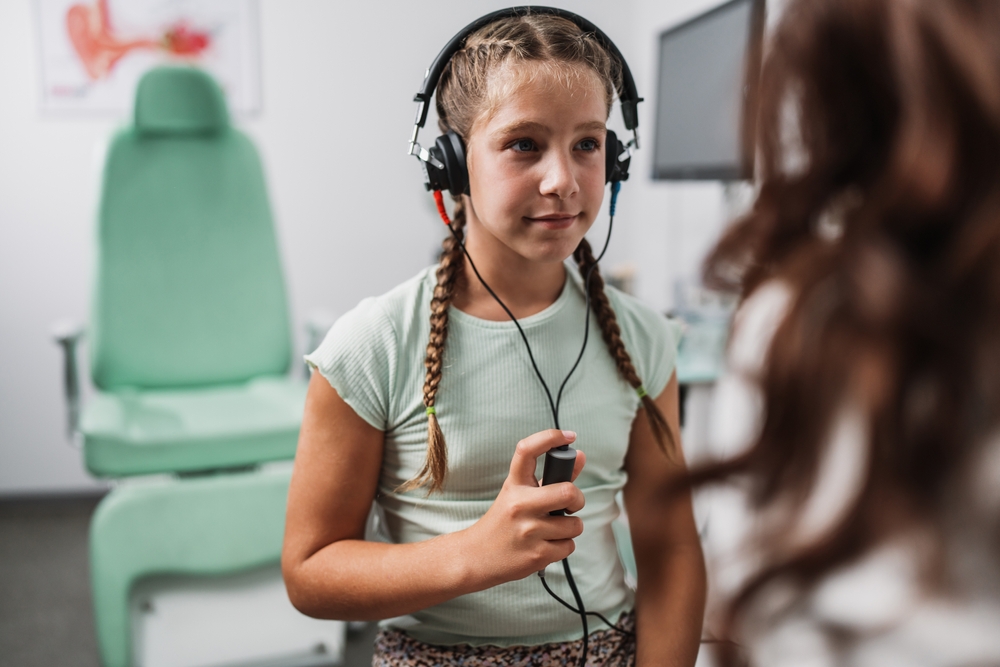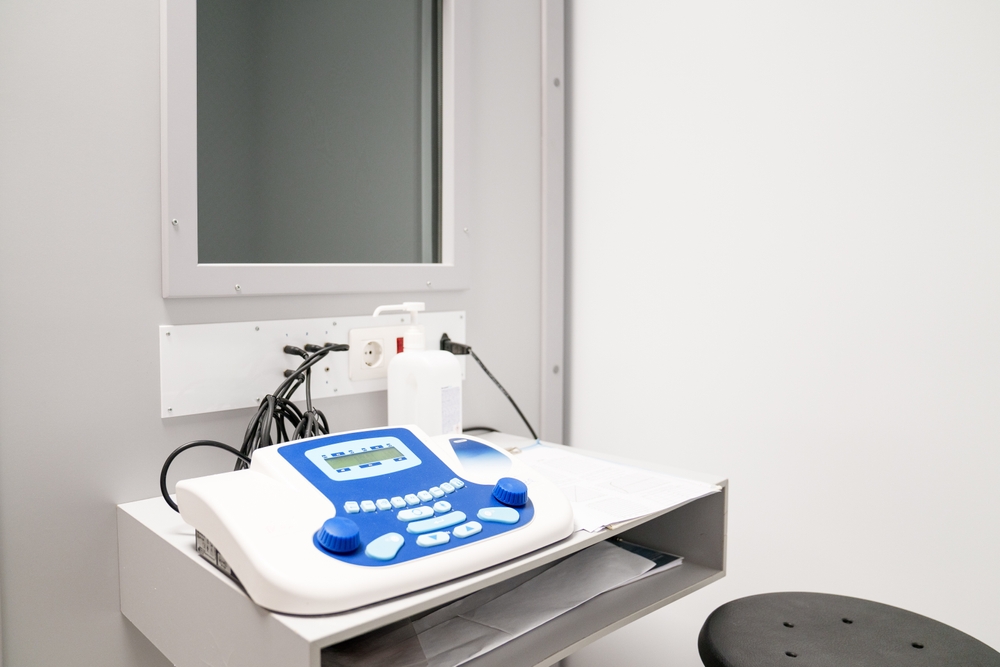Regular hearing assessments are key to effectively identifying and managing hearing loss, yet most people only visit the audiologist every few years. This neglect furthers the severity of hearing loss, often causing irreversible damage.
Fortunately, by understanding the hearing evaluation process, you can confidently identify issues early on and preserve your hearing from potential damage. In this article, we’ll guide you through what to expect during a hearing evaluation, from seeking the initial screening to exploring screening options.
Understanding the Types of Hearing Evaluation
Before we dive into the hearing evaluation process, it’s important to understand the various types of hearing evaluations you might seek. Each type is tailored to identify specific aspects of your hearing ability and pinpoint the nature of any hearing loss you may be experiencing.
The four most common types of hearing evaluations include:
- Pure Tone Audiometry
- Speech Testing
- Tympanometry
- Otoacoustic Emissions (OAE)
Pure Tone Audiometry
This is the most familiar type of hearing test, designed to measure the softest sounds you can hear at various pitches. Through headphones, you’ll listen to tones at different frequencies and indicate each time you hear a sound. This test plots your hearing sensitivity across a range of pitches, creating an audiogram that visually represents your hearing ability.
Speech Testing
Speech tests assess your ability to detect and understand speech at different volumes and in various listening environments. This might involve repeating words presented at a level you can just barely hear to determine your speech reception threshold (SRT) and understanding speech in noise to assess your real-world hearing capabilities.
Tympanometry
Tympanometry is not a hearing test per se but a procedure that evaluates the health of the middle ear and tympanic membrane (eardrum). By varying air pressure in the ear canal, it helps identify issues like fluid in the middle ear, eardrum perforations, or Eustachian tube dysfunction, which can affect hearing.
Otoacoustic Emissions (OAEs)
OAE testing measures sounds given off by the inner ear when responding to a sound. The absence of these sounds can indicate hearing loss or inner ear damage, making OAEs particularly useful for screening hearing in newborns and young children.

Scheduling your Baseline Hearing Examination
Your first hearing assessment serves as a baseline for your hearing ability, revealing any potential issues or necessary intervention strategies. This process will vary depending on the type of examination, but the goal is always the same: to identify your current hearing capabilities.
After your evaluation, your audiologist will quantify your hearing ability on the decibel hearing loss scale (dB HL). This measurement is based on how loud sounds must be for you to hear them, indicating varying severities of hearing loss:
- Mild hearing loss: 26 to 40 decibels
- Moderate hearing loss: 41 to 55 decibels
- Moderate-to-severe hearing loss: 56 to 70 decibels
- Severe hearing loss: 71 to 90 decibels
- Profound hearing loss: 91 to 100 decibels
With this information, you can accurately determine any necessary prevention or intervention strategies to help you maintain clear and effective communication.
Interpreting the Results of Your Hearing Screening
After your evaluation, your audiologist will share any necessary or recommended steps based on your results. If your hearing loss is below 25 dB on the hearing loss scale, you likely won’t require any further action. However, it’s still important to schedule frequent evaluations to catch and resolve any issues before they become problematic.
If your hearing assessment reveals an impairment in hearing, your next step will depend on the diagnosis. For individuals with mild to moderate hearing loss, the challenge often lies in catching soft sounds or understanding speech amidst background noise. In such cases, hearing aids might be suggested to enhance speech clarity in certain environments, tailored to the unique patterns of your hearing loss.
For those facing more severe hearing loss, conventional hearing aids may no longer provide sufficient support. This necessitates exploring more powerful alternatives or considering cochlear implants for those who find hearing aids inadequate. Cochlear implants offer a different approach by directly stimulating the auditory nerve, thus offering the potential for significant improvements in hearing and speech understanding.
These devices, along with any necessary auditory or psychological therapy, can significantly improve your ability to hear and understand speech. With your audiologists recommendations and personal preferences in mind, your evaluation results will guide you toward the most effective solutions for restoring your hearing.
Getting Started with Your Hearing Evaluation
With this information, you’re now ready to schedule your hearing evaluation. Whether you experience issues with hearing or not, this evaluation serves as a major stepping stone in your journey to preserving, or even improving, your hearing ability.
To get started with your hearing evaluation, get in touch with a local audiologist. Our experts at El Dorado Hearing have years of experience helping people maintain and restore their hearing abilities. Give us a call at 702-857-8188 or take a quiz to learn more!




Leave a Reply